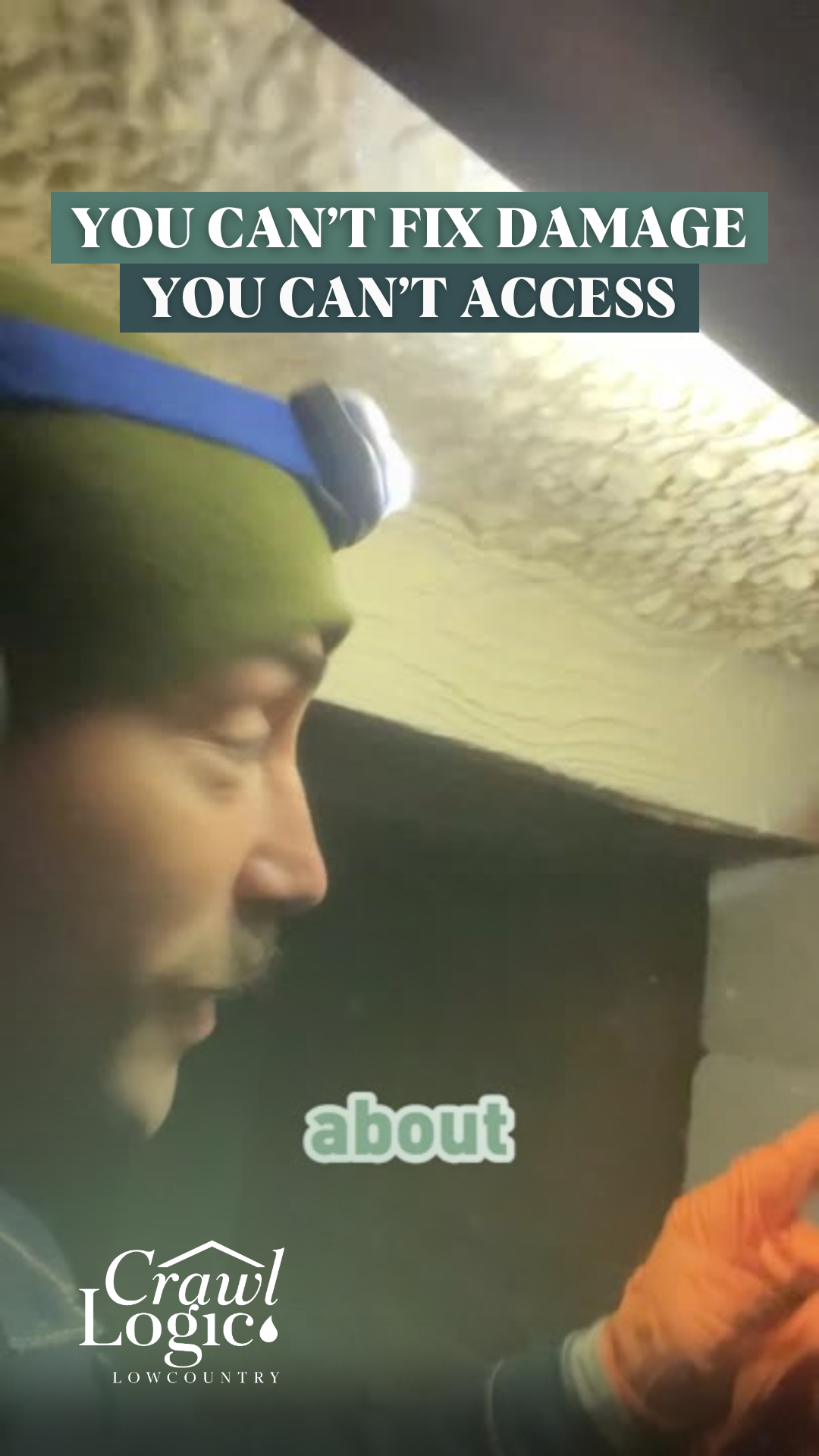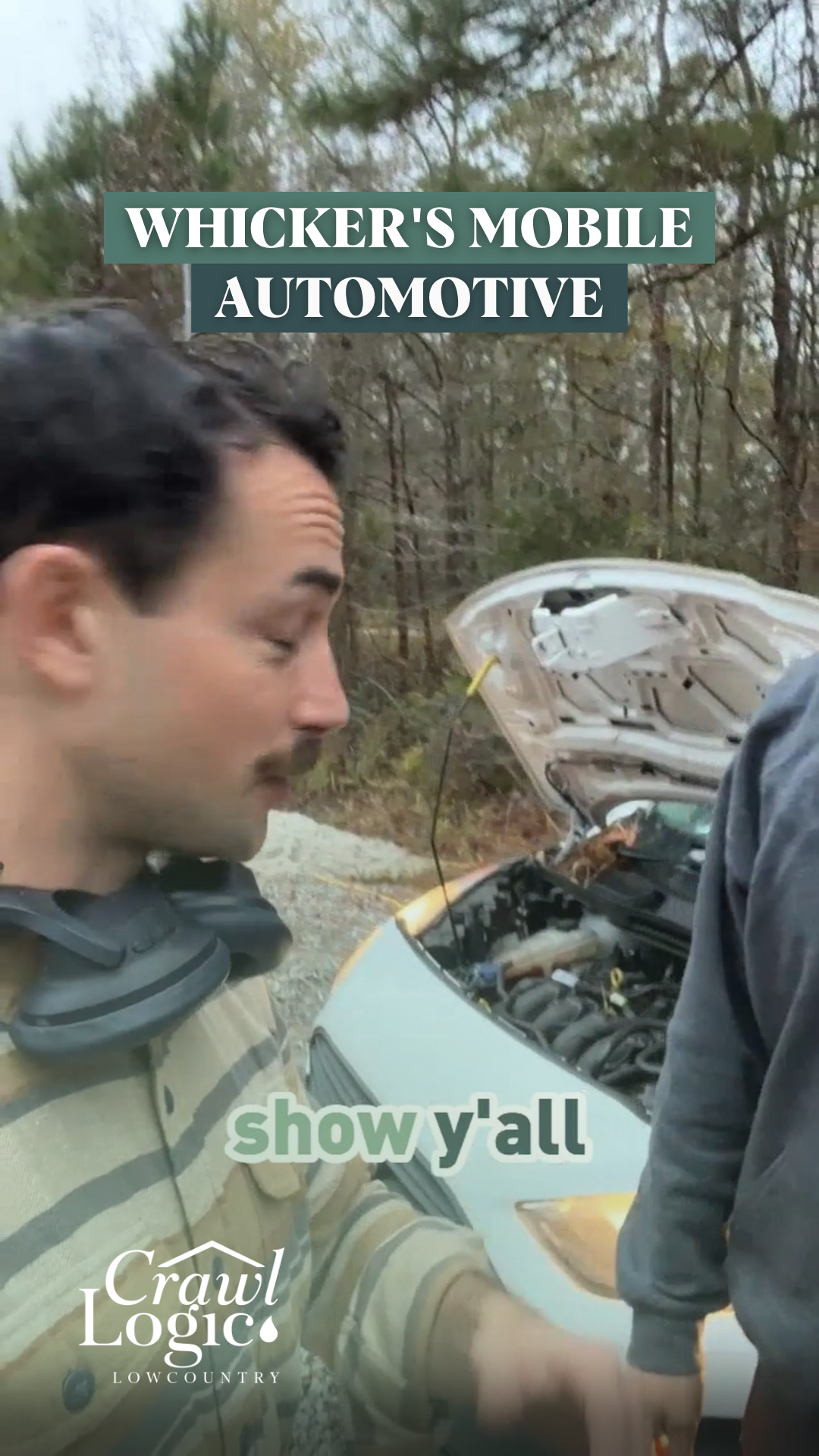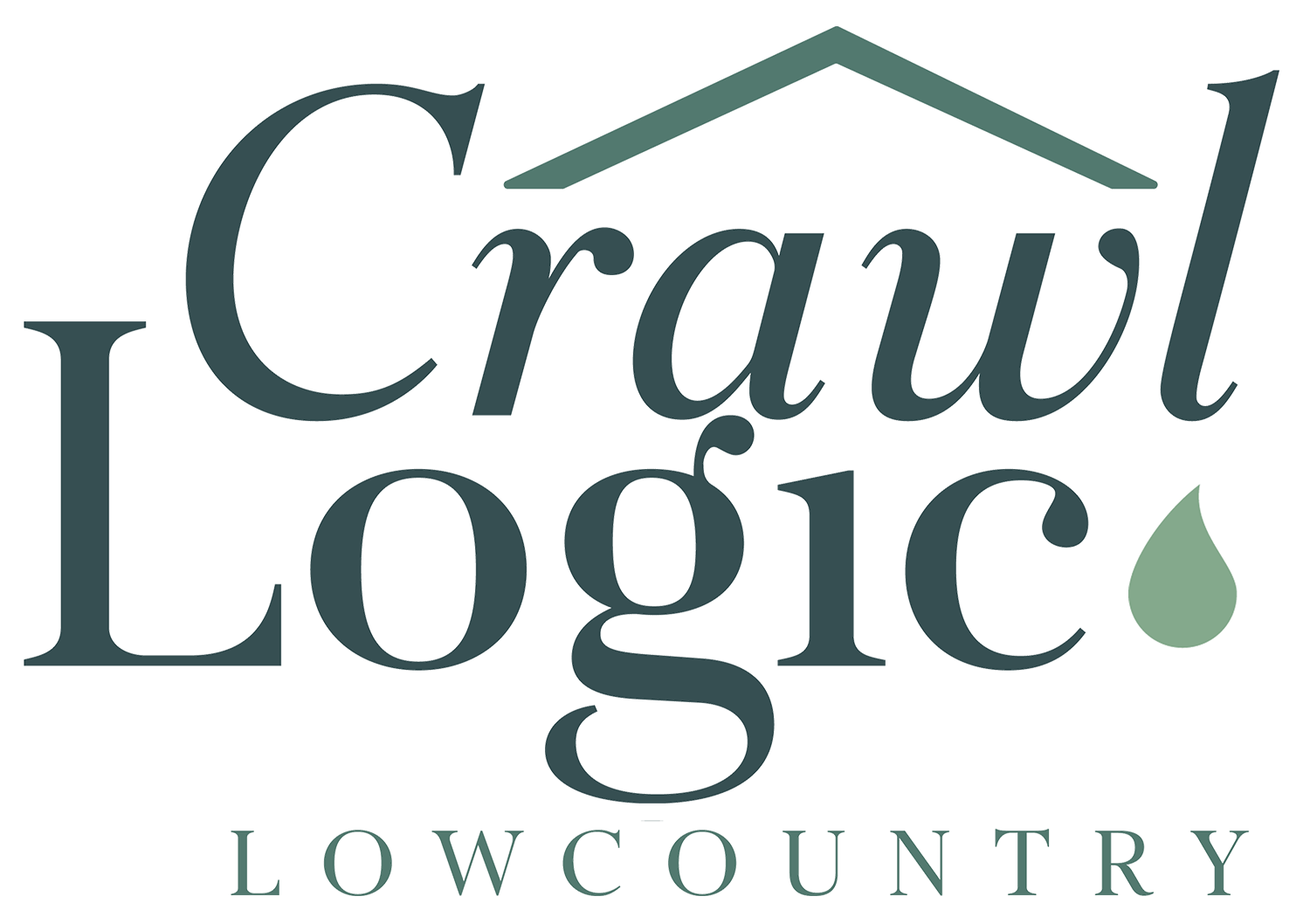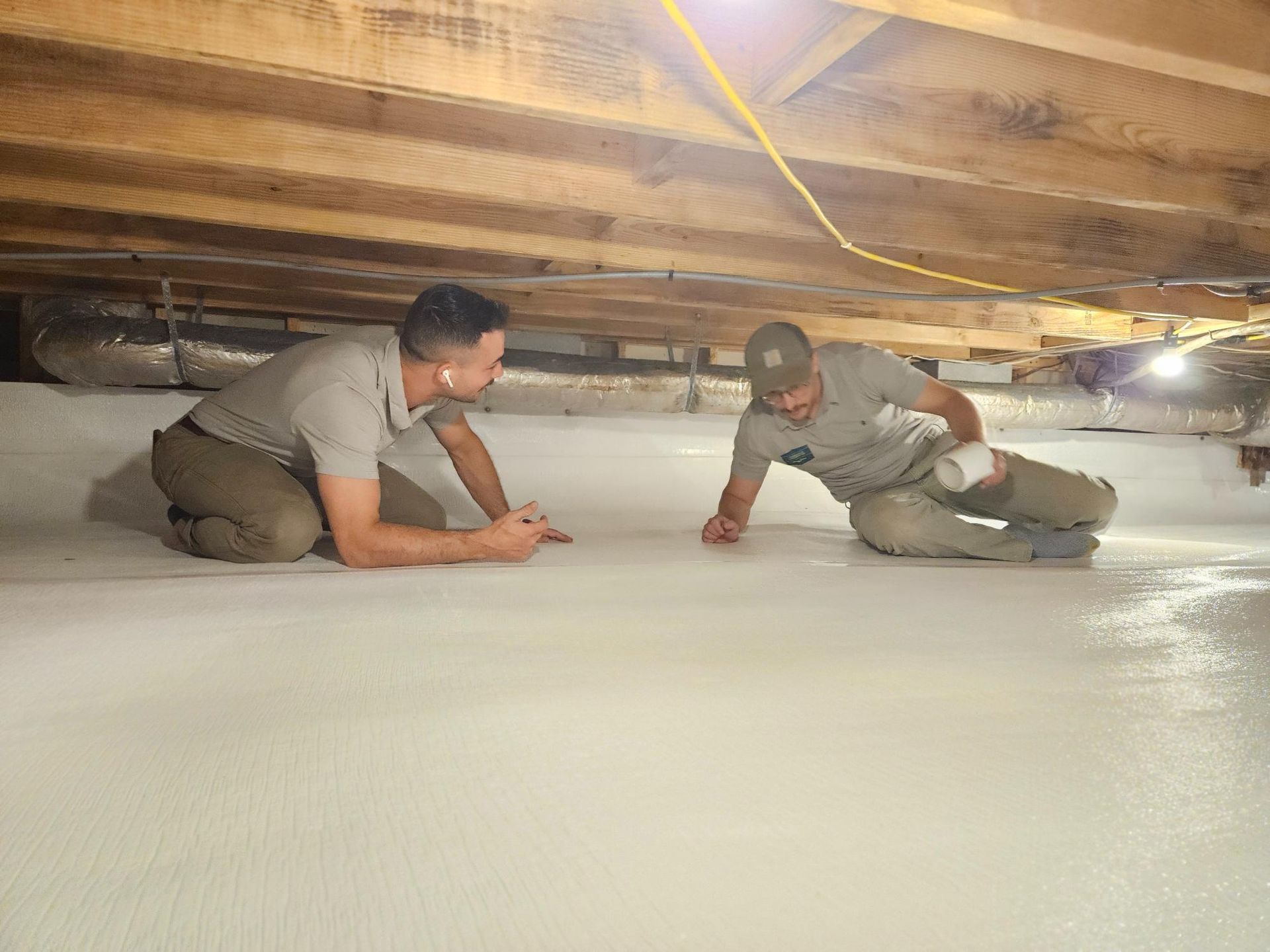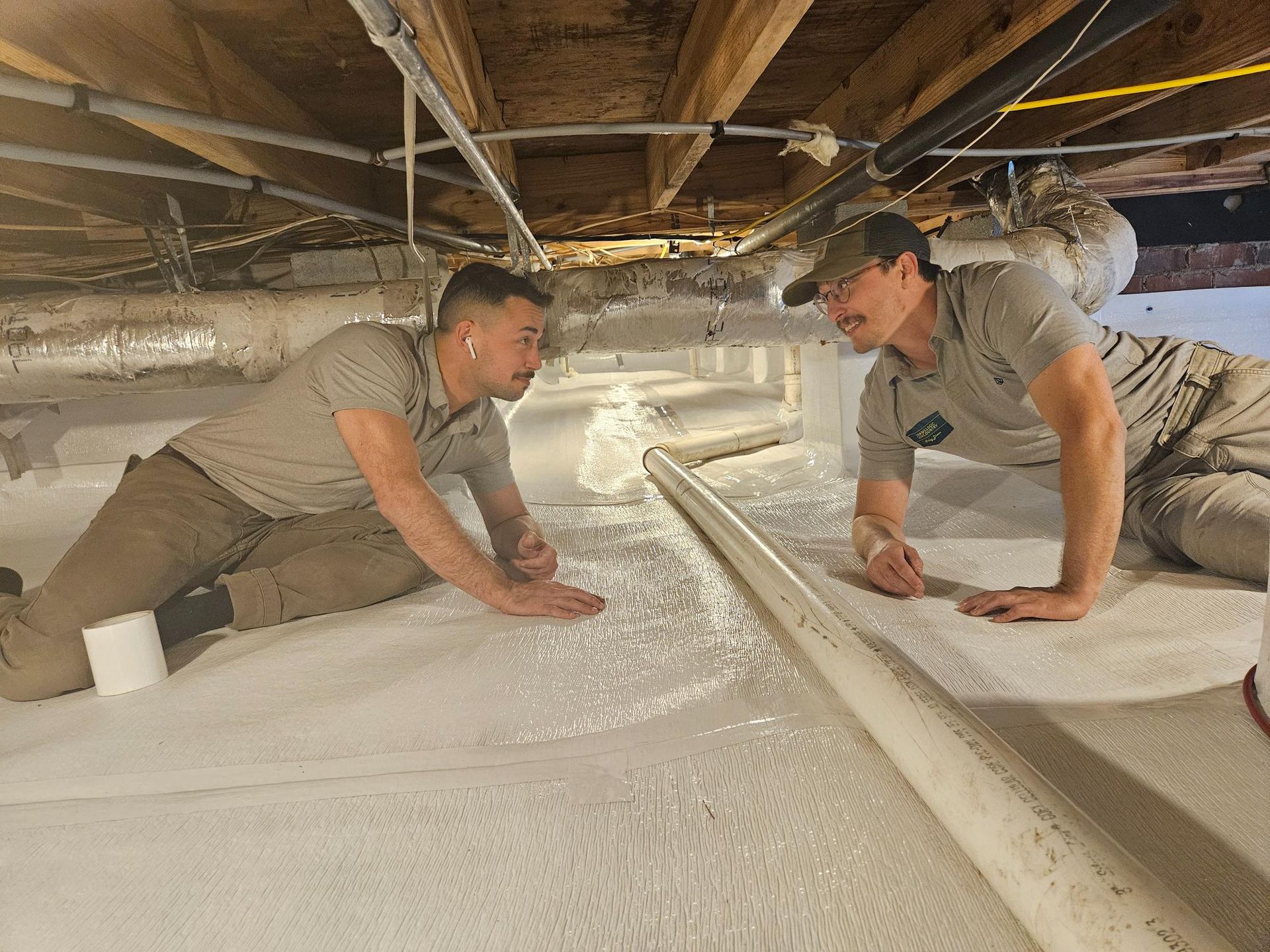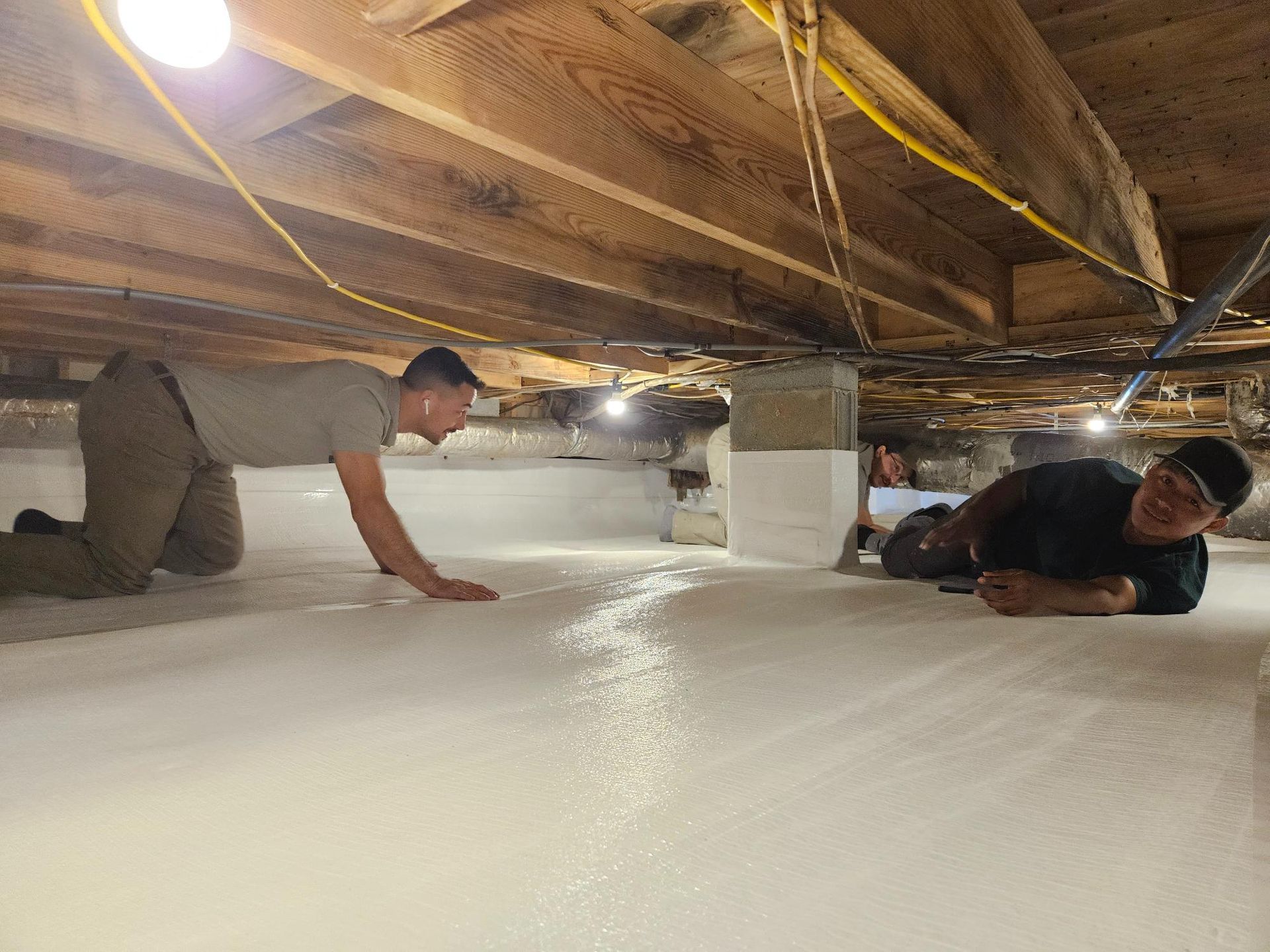Crawl Space Material Quality Test: Watch What Happens to Our 120 Mil Barrier
Crawl Logic Lowcountry
Quality You Can Crawl On
THE RIGHT BARRIER MAKES A BIG DIFFERENCE
Sometimes the best product tests happen by accident.
While working on a landscaping project at my property, I ended up proving exactly why we're so particular about the materials we use in Lowcountry crawl spaces.
Most crawl space companies use barriers that are barely thicker than a human hair - typically 12 to 20 mil.
That's fine if nothing ever touches it, but in the real world, crawl spaces see a lot of wear and tear.
That's why we insist on 120 mil barriers, and what happened today shows exactly why this matters for your home.
Welcome to Crawl Logic Lowcountry!
The Accidental Test Setup
I was fixing a low spot in my yard where some well installers had torn up the ground. The project involved moving piles of sharp bricks and debris, using a shovel with sharp corners, and generally being pretty rough with the materials. Under all this was a piece of our 120 mil poly barrier.
Now, if this had been the standard thin material most companies use, we'd be looking at tears, punctures, and a completely failed barrier. Instead, after all that abuse, the toughest thing you'll find on our material is a tiny nick. That's the kind of durability your crawl space needs.
Why This Matters to Homeowners
When a crawl space barrier fails, you're looking at more than just replacement costs. A compromised barrier lets moisture back into your crawl space, leading to mold, wood rot, and the kind of damage that can cost thousands to fix. Here in the Lowcountry, where moisture is a constant challenge, barrier failure isn't just inconvenient - it's expensive.
Most barriers don't fail dramatically. They get small tears from service workers, punctures from fallen debris, or wear down from regular maintenance traffic. Once that happens, your entire moisture control system is compromised, often without you knowing it.
Understanding Barrier Quality
Let's talk about what mil thickness really means. A human hair is about 9 mil thick. The industry standard 12-20 mil barriers are barely twice that. Our 120 mil barrier? That's more than ten times thicker than what most companies use.
But thickness isn't just about preventing tears. Thicker barriers:
- Hold up better under foot traffic
- Resist punctures from fallen tools or debris
- Maintain their seal longer
- Stand up to real-world crawl space conditions
What Homeowners Should Know
When you're getting quotes for crawl space work, most companies won't mention barrier thickness. They'll talk about their "industrial grade" or "professional" materials without giving you specifics. Here's what to ask:
- What mil thickness are you using?
- How long do your barriers typically last?
- What happens if the barrier gets damaged?
- Do you have examples of long-term installations?
The difference in cost between thin and thick barriers is small compared to the cost of failure. A quality barrier should last decades, not months or years.
Peace of Mind That Lasts
At Crawl Logic Lowcountry, we're not interested in quick fixes or cutting corners. Today's accidental durability test shows exactly why we choose materials that last. When we install a crawl space barrier, we want it to protect your home for decades, not just until the warranty runs out.
Our team serves homeowners throughout Charleston, Mount Pleasant, and the surrounding Lowcountry communities. If you're concerned about your crawl space barrier or want to understand more about what's currently protecting your home, we offer thorough inspections.
